In September 1944, the B24 LIBERATOR begins a bombing campaign to neutralize the airfield on Marcus Island

_______________________________________________________________________________
The Army Air Force made the decision in 1942 to stop sending B17s to the Pacific theater because of their shorter range when compared to the B24 LIBERATOR. Instead, the B24, with its longer range and higher speed, became the premier heavy bomber in the Pacific theater until the advent of the B-29 SUPER FORTRESS.
By the summer of 1944, the United States had secured the islands of Tinian, Guam, and Saipan in the central Pacific. The three islands began to be fortified and air and naval bases began to be completed.The B-29 SUPER FORTRESS could now realisticly reach the home islands of Japan. The US Navy forward based their ships and submarines to the islands also. With the plethora of US forces based there, they became prime targets to the Japanese.
With the massing of US war assets on the three islands, they became prime targets to the Japanese. The Japanese could stage land based aircraft from the islands of Truk, Iwo Jima, and Marcus Island. For this reason, these bypassed Japanese bases needed to be monitored and their ability to stage bombing mission diminished. To guard the flanks of their bases in the Marianas and, to prepare for the invasion of Iwo Jima, the US Army Air Force brought in three B24 Groups to the central Pacific under the command of 7th Air Force, Bomber Command.
Three B24 bomb groups were assigned to 7th Air Force in the Central Pacific. Each group had four squadrons assigned to it, with 12 airplanes to a squadron, for a total of approximately 144 B24s in the Central Pacific theater.

11th Bomb Group – Harmon Field, Guam
11th Bomb Group – Moved to Harmon Field on Guam in October 1944 to begin bombing raids in support of the scheduled landings on Iwo Jima.

They also laid mines in the harbor at Chichi Jima, and flew raids on other targets such as Truk, the Bonin island group, and Marcus Island. In July 1945, they were moved to Okinawa (Yomitan Airfield) to begin preparation for the invasion of the mainland.
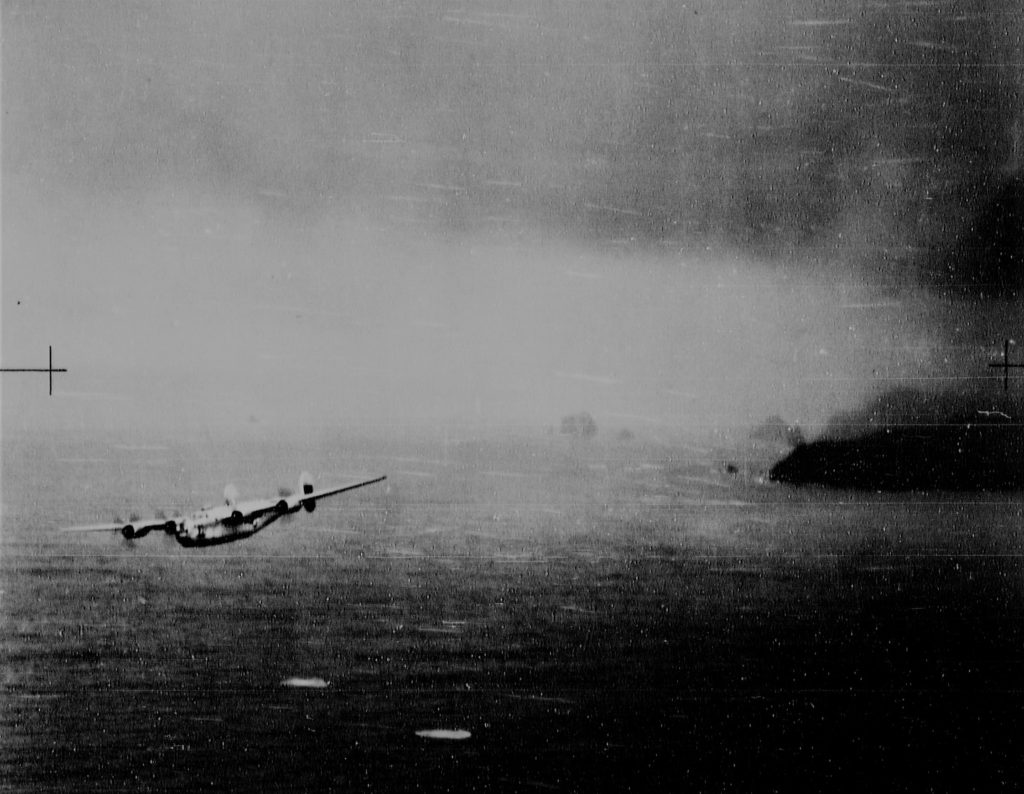
42 Bomb Squadron – 12 x B24s
26 Bomb Squadron – 12 x B24s
98 Bomb Squadron – 12 x B24s
431 Bomb Squadron – 12 x B24s
30th Bomb Group – Isley Field, Saipan
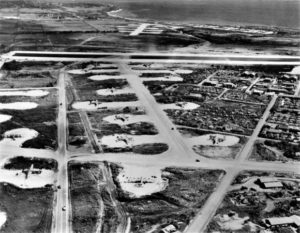
30 Bomb Group moved to Isley Field, Saipan in August 1944 to support bombing raids on Iwo Jima, the other Bonin Islands, Truk, and Marcus Island. No longer needed in the Mariannas, the group returned to Hawaii in March 1945 to allow newly arriving B29s parking space. A lot of their crewmembers stayed in the area and were transferred to the other two Bomb Groups, the 11th and 494th.
The 30th Bomb Group had four B-24 squadrons:
27 Bomb Group – 12 X B24s
38 Bomb Group – 12 X B24s
392 Bomb Group – 12 X B24s
819 Bomb Group – 12 X B24s
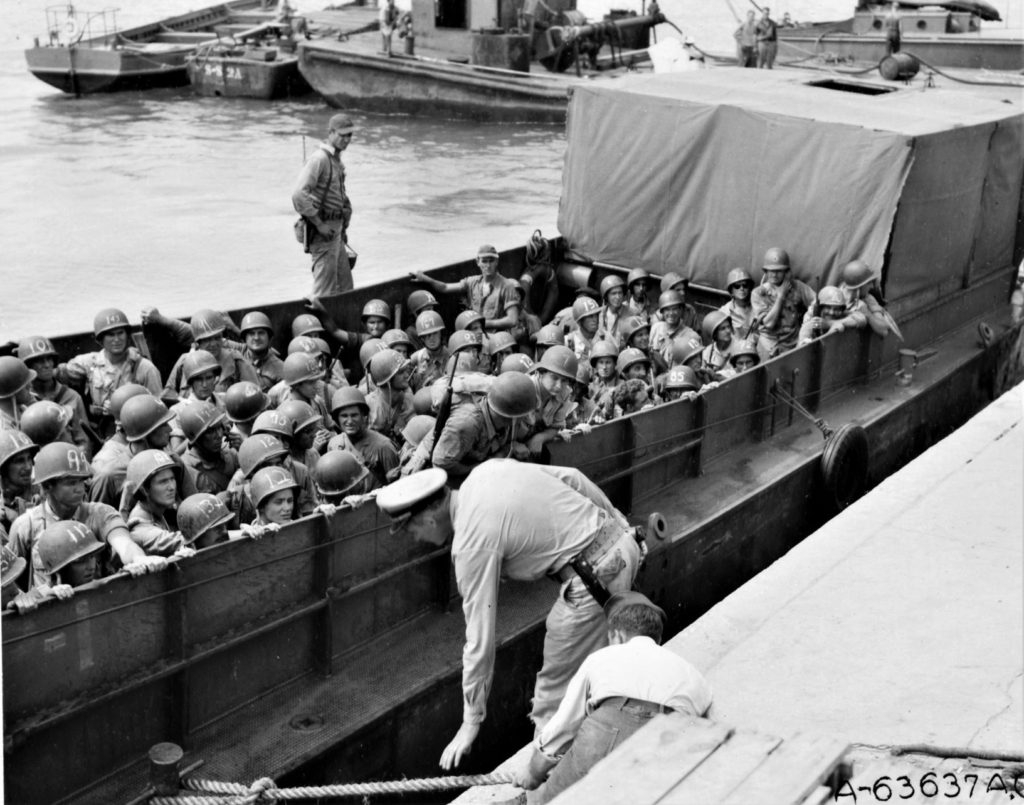
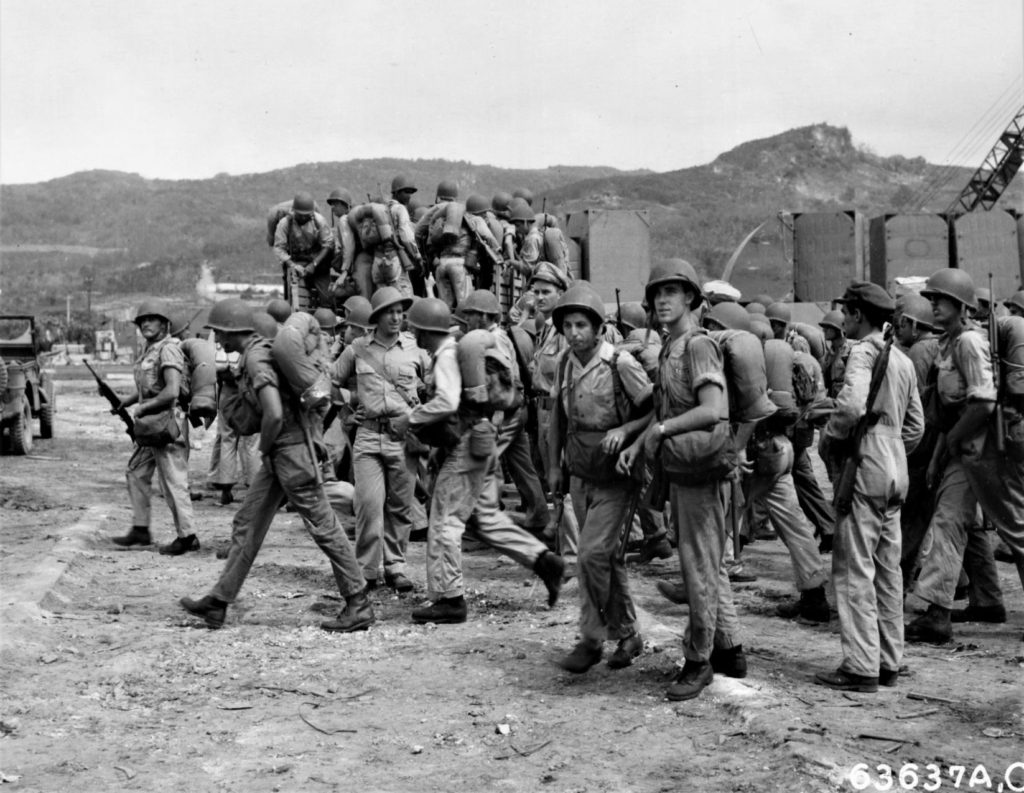
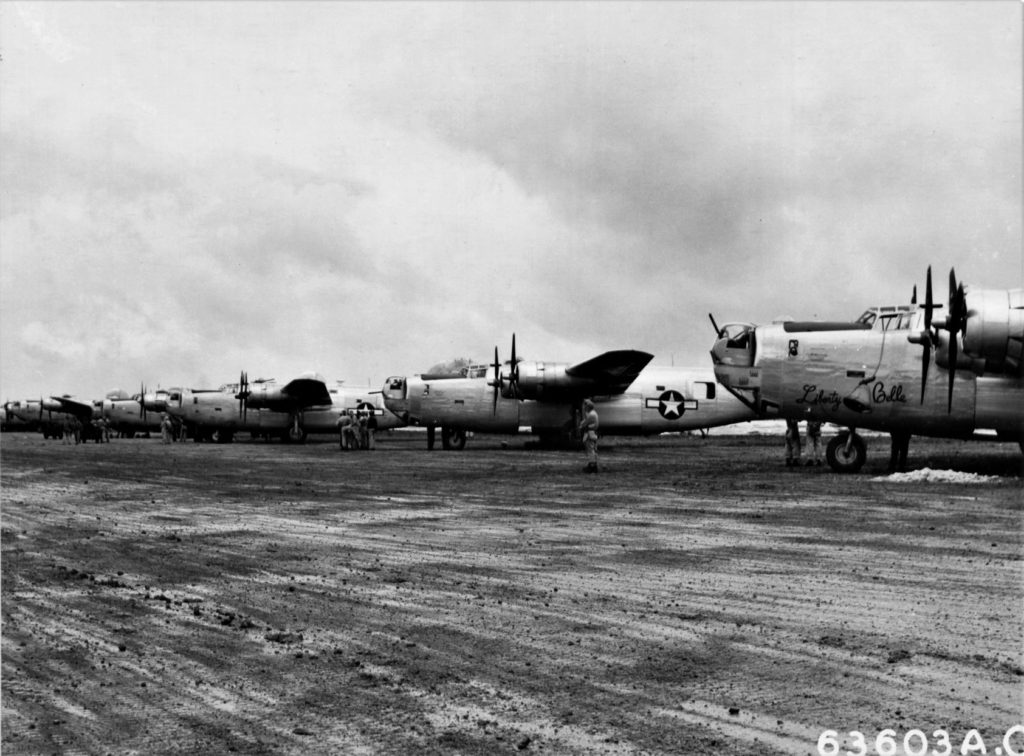
494 Bomb Group – Anguar Island
The 494th Bombardment Group, or “Kelly’s Cobras”, was the last B-24 Liberator bombardment group to be dispatched from the United States during the Second World War. It was made up of three new bombardment squadrons (864th, 865th and 866th) and one more experienced unit, the 867th Bombardment Squadron.
The 494th was allocated to the Seventh Air Force, fighting in the Pacific. Towards the end of 1944 the group moved to Angaur, officially arriving on 30 September 1944, although the last members of the group did not reach the island until December. The group entered combat with a series of attacks on Japanese held islands in the Palau group, and the first of a long series of attacks on the Philippines.
The Philippines became the group’s main target during its first six months in the Pacific. The group carried out a large number of attacks on targets on Luzon, as well as taking part in the bombardment of Corregidor, and carrying out a series of raids over Mindanao.
At the end of April a detachment of B-24s from the 494th moved to Guam, where they spent two weeks supporting the 11th Bombardment Group in its attack on Marcus Island and Truk.
On 24 June 1945 the group moved to Okinawa. Its aircraft began to arrive on 1 July, and on 5 July forty eight aircraft from the 494th became the first Liberator bombers to attack the Japanese home islands from Okinawa. (Rickard, J (15 July 2008), 494th Bombardment Group, http://www.historyofwar.org/air/units/USAAF/494th_Bombardment_Group.html )

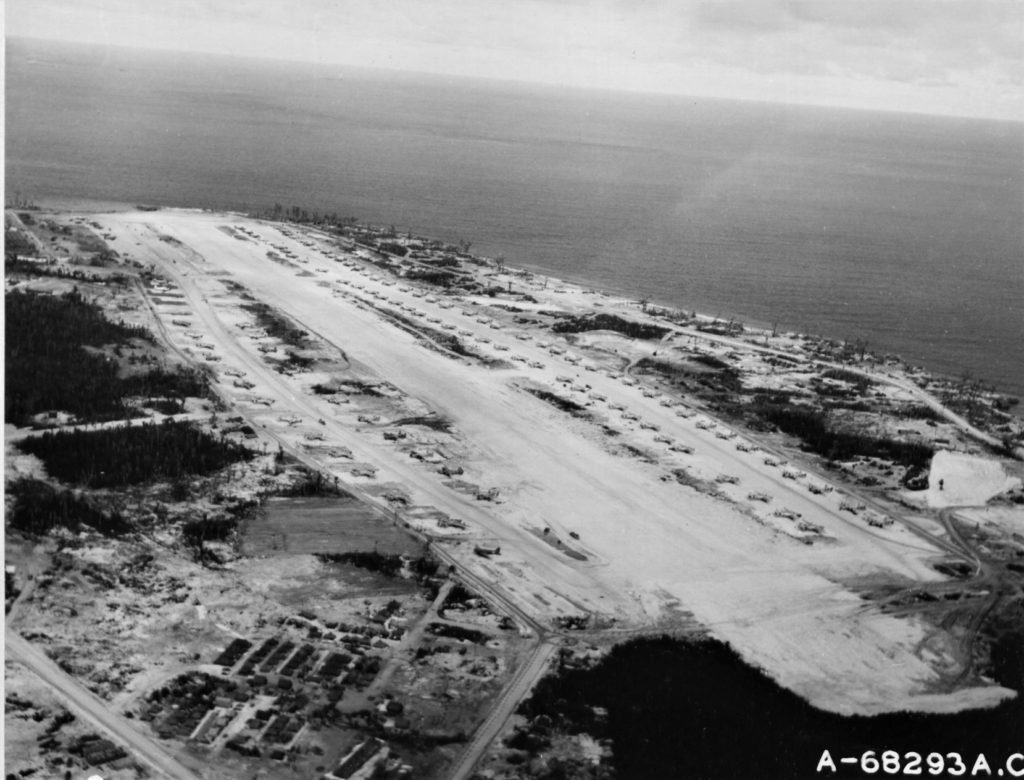
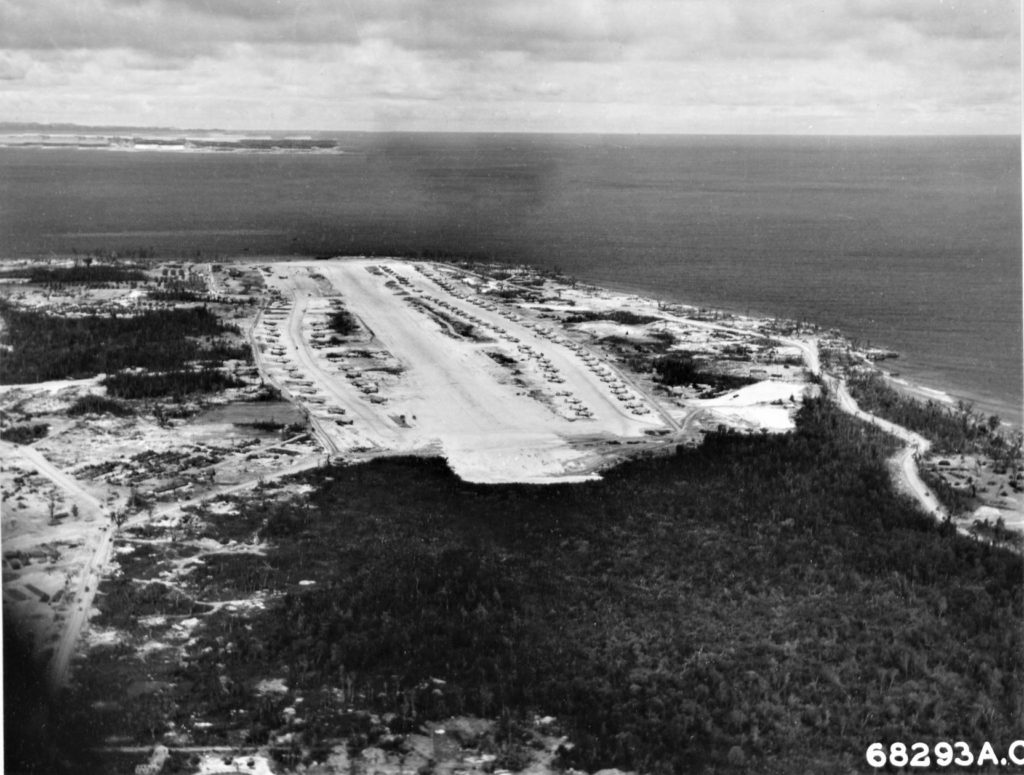
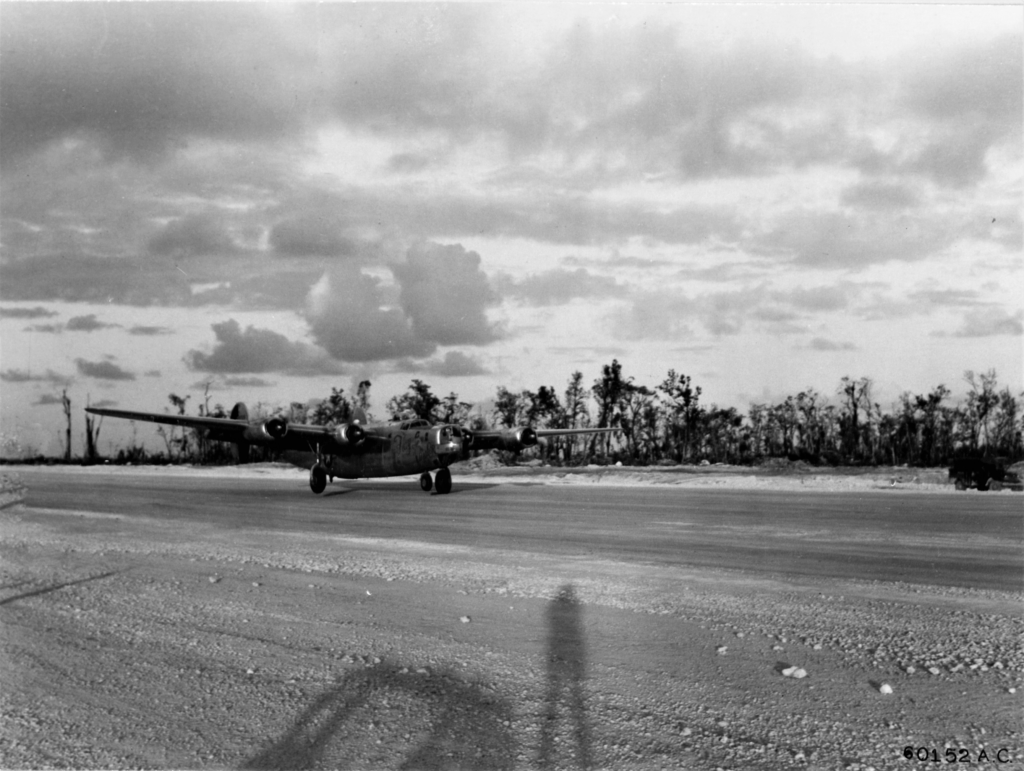
Its primary mission was to bomb targets on Yap, Koror and in the Philippines. However, they did send crews and planes to Harmon Field in Guam to support missions bombing Iwo Jima, the other Bonin islands, Truk, and Marcus Island.
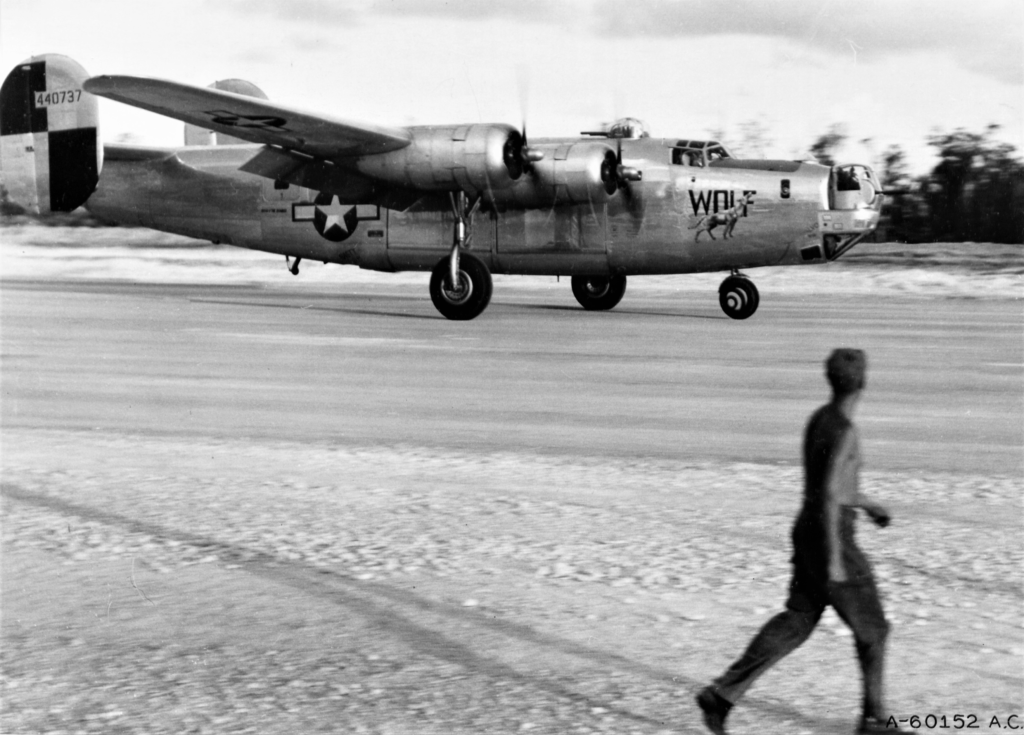
the 494th Bobbardment Group had the distinction of being the last B24 unit deployed overseas during World War Two. The group moved to Yontan Airfield on Okinawa in June 1945 to begin flying missions to the Japanese mainland.
The 494th Bomb Group had under it four B-24 squadrons:
864 Bomb Squadron – 12 x B24s
865 Bomb Squadron – 12 x B24s
866 Bomb Squadron – 12 x B24s
867 Bomb Squadron – 12 x B24s
_____________________________________________________________________________
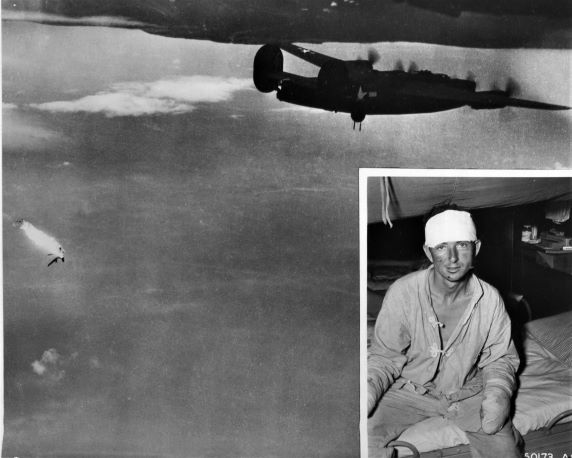
4 Sep 1944 – B-24s on armed reconnaissance missions bomb Marcus.
5 Sep 1944 – Two B-24s fly an armed reconnaissance and bomb Marcus.
6 Sep 1944 – B-24s on armed reconnaissance bomb Marcus.
7 Sep 1944 – B-24s on armed reconnaissance missions hit Marcus.
12 Sep 1944 – A lone B-24 on armed reconnaissance bombs the building area on Marcus.
13 Sep 1944 – B-24s on armed reconnaissance missions bombs Marcus.
14 Sep 1944 – B-24s on armed reconnaissance bomb Marcus.
16 Sep 1944 – Three B-24s on training and armed reconnaissance missions bomb Pagan and Marcus.
17 Sep 1944 – A B-24 on a armed reconnaissance over Marcus is unsuccessful due to bad weather.
18 Sep 1944 – Two B-24s on armed reconnaissance from Saipan bomb Marcus.
19 Sep 1944 – Three B-24s on snooper and armed reconnaissance missions bomb Iwo Jima and Marcus.
20 Sep 1944 – A lone B-24 on armed reconnaissance bombs Marcus.
23 Sep 1944 – Two B-24s on armed reconnaissance bomb Marcus.
24 Sep 1944 – Two B-24s on an armed reconnaissance mission bomb Marcus.
25 Sep 1944 – B-24s strike Marcus.
26 Sep 1944 – Two B-24s from Saipan on armed reconnaissance bomb Marcus.
26 Sep 1944 – Two B-24s from Saipan on armed reconnaissance bomb Marcus.
27 Sep 1944 – Two B-24s on armed reconnaissance hit Marcus.
29 Sep 1944 – Three B-24s from Saipan bomb Marcus.
October 1944
2 Oct 1944 – B-24s hit Marcus.
4 Oct 1944 – B-24s bomb targets on Marcus.
7 Oct 1944 – Three B24s hit anti-aircraft positions and a radio station on Marcus Island. (CINCPAC War Diary Nov 1944, pg 45)
8 Oct 1944 – B-24s hit Marcus.
12 Oct 1944 – B-24s hit AA positions on Marcus.
14 October 1944 – Three B24s from the 27th Bomb Squadron, 30th Bomb Group attack Marcus Island
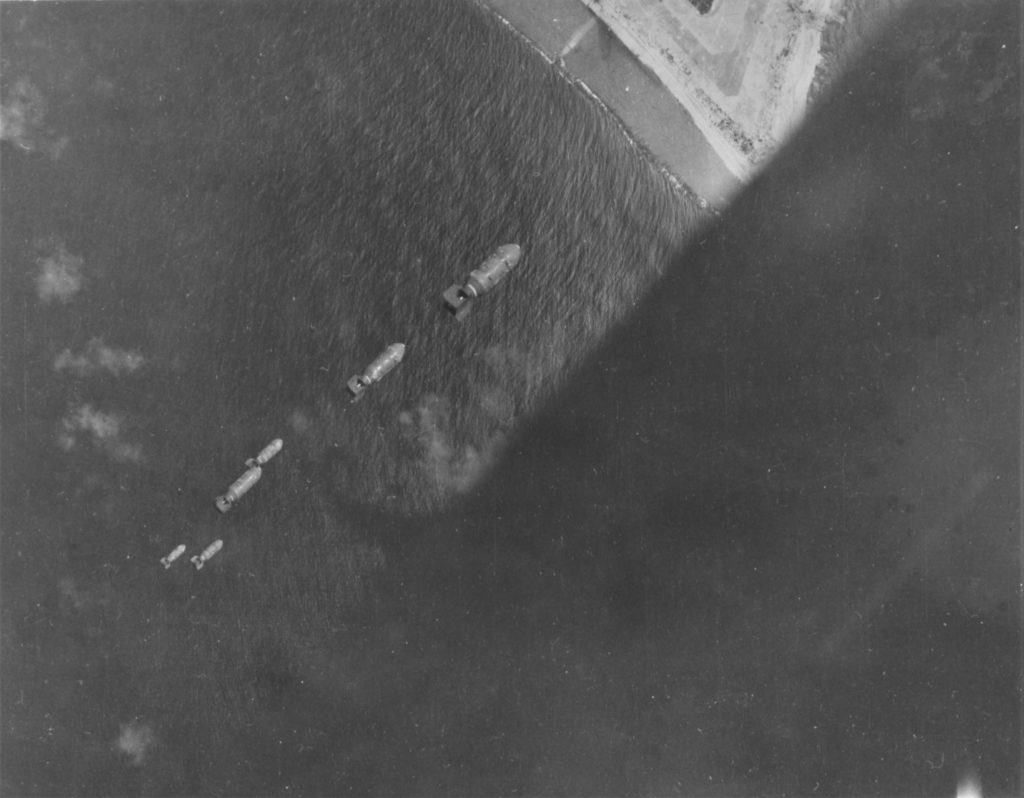
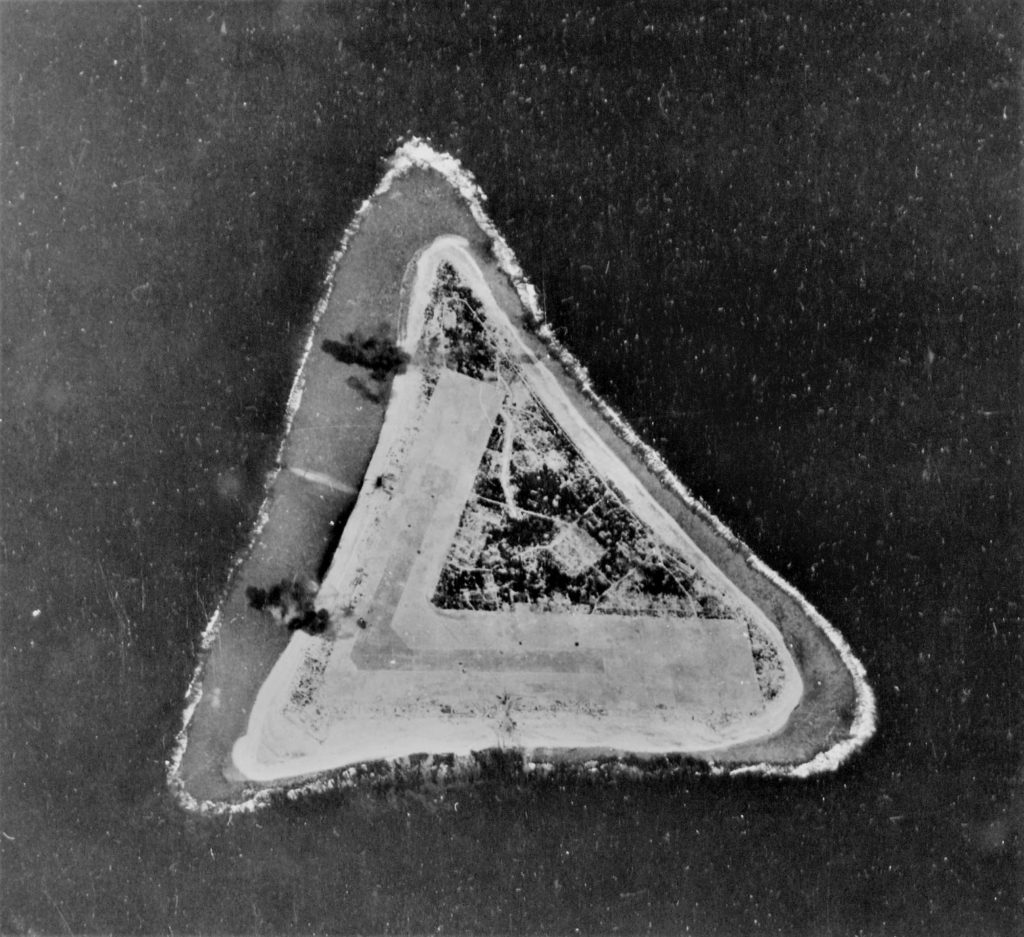

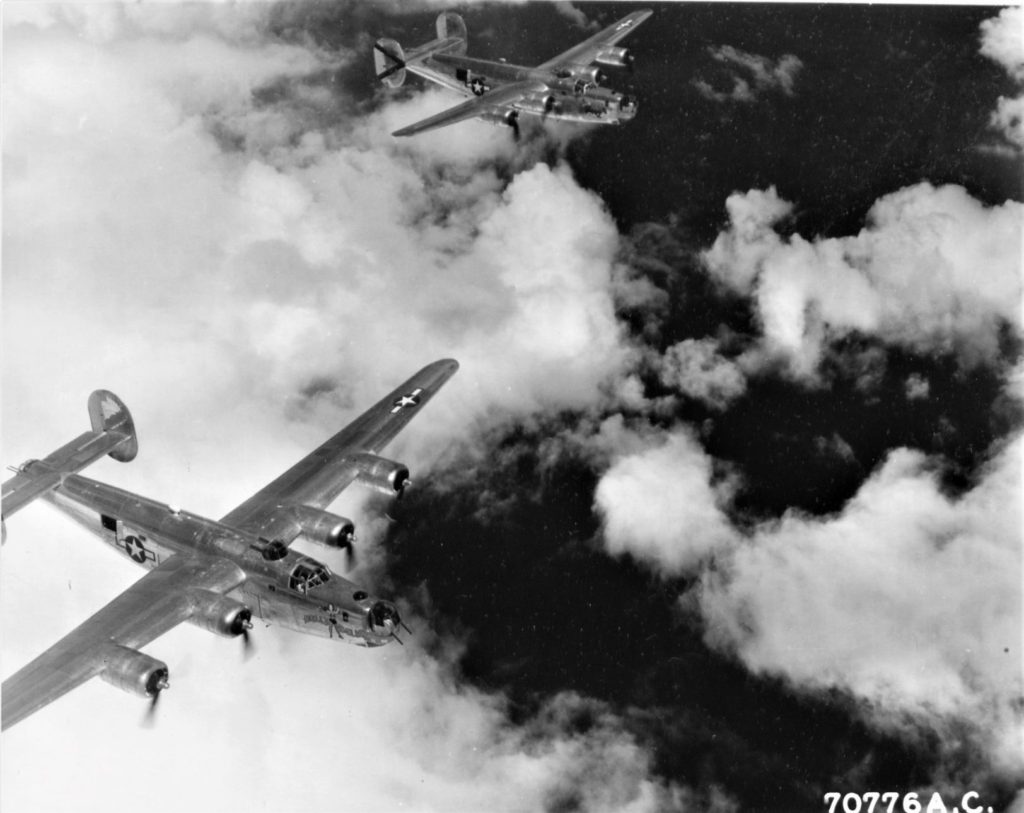
On 25 November 1944, Consolidated B-24 Liberators Of The 865Th And 867Th Bomb Squadron, 494Th Bomb Group stationed on Anguar Island participated in a raid on Arakebesan Island, Palau Islands, Caroline Group. Here two of the heavy bombers wing their way to the target. (US Air Force photo, NAI 204970139)

November 1944
2 Nov 1944 – Three B-24s from Guam on armed reconnaissance, hit Marcus. (CINCPAC War Diary Nov 1944, pg 22)
3 Nov 1944 – Three B-24s from Saipan flew armed reconnaissance and snooper missions over Marcus. (CINCPAC War Diary Nov 1944, pg 22)
4 Nov 1944 – Two B-24s bombed air installations on Marcus. (CINCPAC War Diary Nov 1944, pg 34)
5 Nov 1944 – Three B-24s bombed air installations on Marcus. Anti-aircraft fire was described as accurate and damaged two of the aircraft (CINCPAC War Diary Nov 1944, pg 34)
7 Nov 1944 – B-24s bomb AA positions on Marcus
9 Nov 1944: Three B-24s dropped six and one forth tons of bombs on Marcus Island. (CINCPAC War Diary Nov 1944, pg 56)
21 Nov 1944 – Three B-24s fly an armed reconnaissance and bomb Marcus.
24 Nov 1944 – Three B-24s from Guam Island on armed reconnaissance bomb Marcus.
28 Nov 1944 – Three B-24s flying an armed reconnaissance mission bomb Marcus.
By the end of the month of November 1944, the runway at Anguar Island had been completed with all taxiways completed and 89 hardstands finished. A 1000 foot runway extension was cleared and 200 feet rough graded. (CINCPAC War Diary Dec 1944, pg 03)
December 1944
4 Dec 1944 – Three B24s of the 11th Bomb Group out of Harmon Field, Guam, strike air installations on Marcus Island from 16,000 feet. Thirty two bombs hit on land while thirteen landed in the ocean. Anti aircraft fire was meager, varying from inaccurate to accurate. No planes were hit. A total of 45 x 100 pound General Purpose bombs were dropped.
13 Dec 1944 – Three B24s of the 30ths Bomb Group flying out of Saipan at 18,500 feet hit the area between the runways at Marcus Island. A total of sixteen 500 pound General Purpose bombs were dropped, with four landing in the ocean. Anti aircraft fire was moderate but inaccurate.
18 Dec 1945 – Three B24s from the 11th Bomb Group flying out of Harmon Field, Guam, dropped 45 x 100 pound General Purpose bombs on the runway and installations on Marcus Island. Bombing altitude varied between 15,600 feet to 18,00 feet. Despite the varying altitudes, one B24 was hit by the moderate and accurate anti aircraft fire, with one crewmember being injured. A total of 45 x 100 pound General Purpose bombs were dropped. Twenty four bombs hit the airfield area but 21 landed in the water.
26 Dec 1944 – Three B-24s fly armed reconnaissance and bomb Marcus.
January 1945
January 1945 found the B24s of Seventh Air Force concentrated on bombing Iwo Jim in preparation for the February 1945 invasion. A total of 81 multi-aircraft missions were flown against Iwo Jima during this time frame. Marcus Island was put on a weekly armed reconnaissance mission schedule to keep tabs on the airfield there. Four B24 missions were flown against Marcus Island in January 1945.
2 Jan 1945 – Three B24s from the 11th Bomb Group, Harmon Field, Guam, bombed the airfield area of Marcus Island from 16,000 feet. Anti aircraft was meager, inaccurate, with no aircraft damage. Bomb accuracy “Good”. Total of 45 x 100 pound General Purpose bombs were dropped. (2.25 tons)
12 Jan 1945 – Three B24s from the 30th Bomb Group on Saipan bombed air installations from 19,400 feet by radar due to cloud cover. Unobserved results. Total of 24 500 pound General Purpose bombs were dropped. (6 tons)
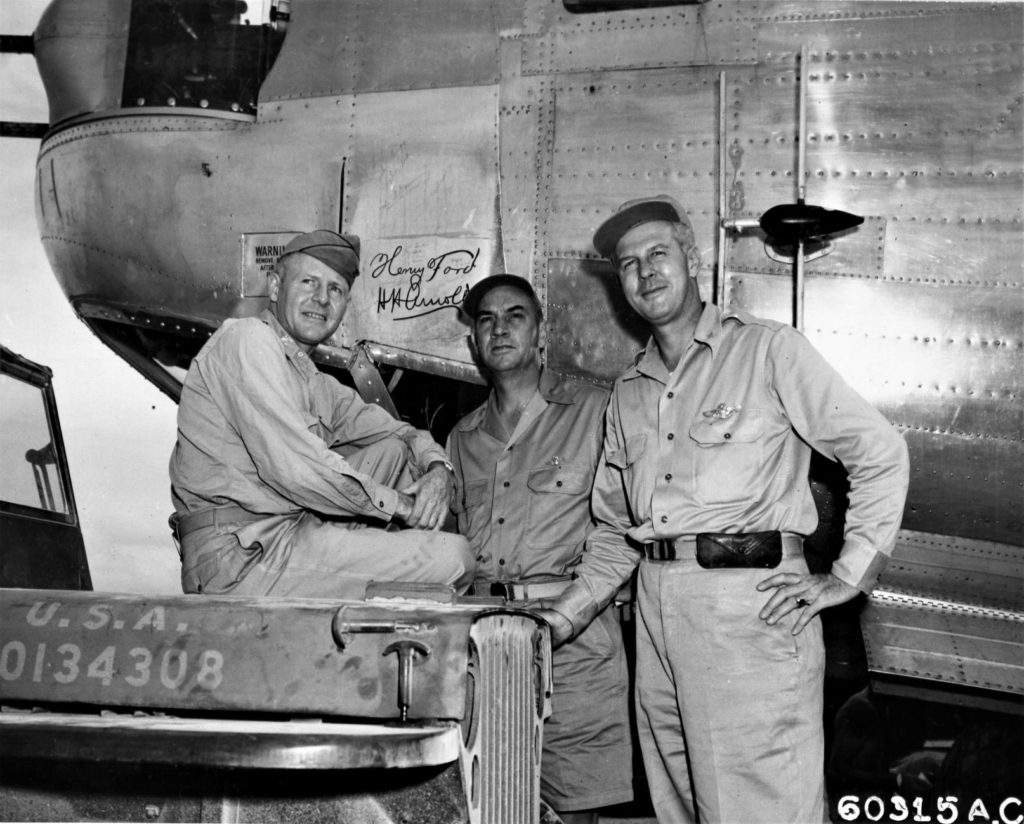
17 Jan 1945 – Three B24s from the 11th Bomb Group, Harmon Field, Guam, bombed the airfield area of Marcus Island from 14,000 feet. Anti aircraft was described as moderate and accurate, with no reported aircraft damage. Bombs observed hitting in the target area and hits observed across the runways. Total of 45 x 100 pound General Purpose bombs were dropped. (2.25 tons)

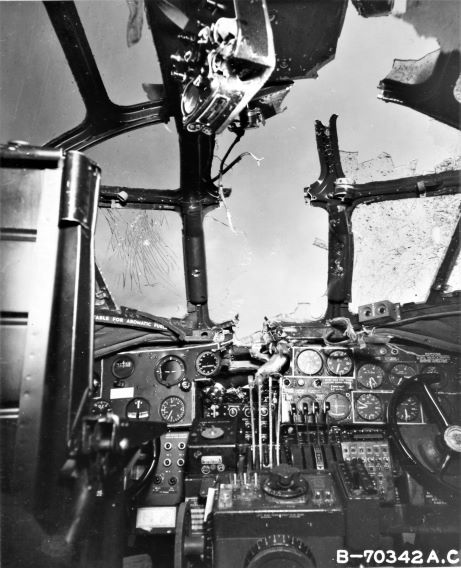
29 Jan 1945 – Two B24s from the 30th Bomb Group on Saipan performed an armed reconnaissance on Marcus Island. They bombe air installations from 17,500′ and 18,700′. Bombs of one B24 hit the target while the other hit in the water around the island. Runways were reported as operational , with heavy equipment seen on the eastern end of the East-West runway. No anti aircraft or Japanese aircraft were encountered. A total of sixty 100 pound General Purpose bombs were dropped. (3 tons).
February 1945 –
Iwo Jima is invaded & the allies increase raids on Marcus
With the invasion of Iwo Jima on 19 February 1945, the B24s would turn their attention to other targets, which spelled increased attacks on Marcus Island.
16 Feb 1945 – Two B24s from Saipan, 30th Bomb Group, bombed Marcus Island from 10,000 feet. 80% of the bombs were in the target area while 20% 200 yards SE, in the ocean. AA meager to moderate, and accurate. One plane aborted due to radio malfunction. 30 x 100 GP bombs.
17 Feb 1945 – Three B24s from Saipan, 30th Bomb Group, bombed Marcus Island from 16,500 feet using radar. All bombs on island with center of pattern east of desire MPI and smoke observed on target. Weather 1/10 to 10/10 coverage. Leader bombed by radar, others on leads bomb release. 120 100 lb GP bombs dropped.
18 Feb 1945 – Three B24s from the 11th Bomb Group, Harmon Field Guam, bombed air installations on Marcus Island from 10,000′. The leader used radar while the other two planes dropped on lead’s release. The island was covered in clouds and the results were unobserved.

20 Feb 1945 – Two B24s from the 11th Bomb Group stationed at Harmon Field, Guam, bombed the Marcus Island airfield and related installations. It was supposed to be a three ship formation but one plane aborted due to a blown cylinder on one engine. The leader bombed using radar from 10,000 feet. All bombs hit 100 yards NE of target area. Antiaircraft fire was heavy and accurate, as one aircraft was hit, causing minor damage. Twenty 100 pound General Purpose bombs were dropped by the two aircraft.
21 Feb 1945 – Three B24s from the 11th Bomb Group stationed on Harmon Field, Guam, bombed a cloud covered Marcus Island by radar. Sixty 100 pound General Purpose bombs were dropped by the three aircraft, results unobserved due to the overcast.
22 Feb 1945 – Three B24s from the 11th Bomb Group stationed on Harmon Field, Guam, bombed Marcus Island from 7500′ to 8000 altitude. All bombs hit the runways and buildings adjacent to it. Heavy anti aircraft fire was encountered , causing minor damage to two planes. Sixty 100 pound General Purpose bombs were dropped.
A pilot direction indicator, or PDI, is an aircraft instrument used by bombardiers to indicate heading changes to the pilot in order to direct them to the proper location to drop bombs. The PDI is used in aircraft where the pilot and bombardier are physically separated and cannot easily see each other.
Automated Flight Control Equipment, or AFCE, linked the Norden bomb sight to the auto pilot, giving the bombardier control of the aircraft during the bomb run.
Both were used during visual run ins to a target. The lead navigator would use the Norden bomb sight to determine the bombs away point, and the other aircraft in the formation would drop their bombs when they saw their leader drop theirs. This allowed the following aircraft to replace the bombardier with a “Toggler”, usually an enlisted gunner.
24 Feb 1945 – Three B24s from the 11th Bomb Group stationed on Harmon Field, Guam, again bombed Marcus Island from 10,000 to 10,500 feet. Although the weather was clear, radar was used to drop the bombs. All bombs landed on the north end of the NE-SW runway and in the dispersal area east of that runway. Inaccurate anti aircraft fire was encountered with no hits on any aircraft.
March 1945
More than 80 Japanese aircraft were dispatched against Saipan and Tinian between November 1944 and the end of the offensive in February 1945. They would usually stage through Iwo Jima before making this last sortie to their target. The Japanese destroyed 11 B-29s, caused major damage to eight and minor damage to another 35. American casualties were 45 dead and over 200 wounded. USAAF fighters and anti-aircraft guns shot down about 37 Japanese aircraft during these raids.
After the invasion of Iwo Jima in February, 1945, Marcus Island became the last base the Japanese had from which they could fly to from the mainland and attack American forces in the Mariannas or on Iwo Jima. Its importance to the Japanese was not lost on the Americans. With Iwo Jima no longer offering any targets to the strategic B24 bombers of the 7th Air Force, they turned their attention to Marcus Island and the Truk Atoll.
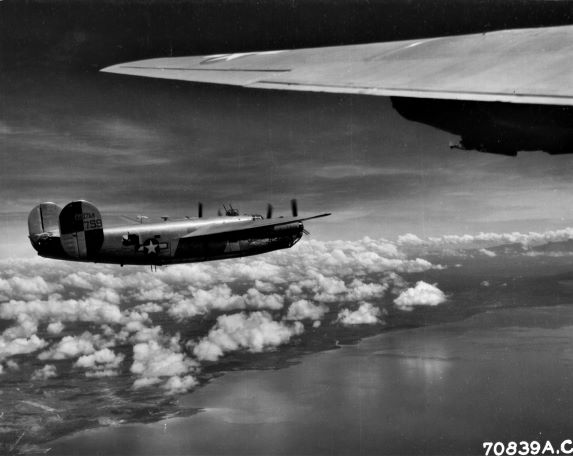
April 1945
April 1945 saw increased attention given to Marcus Island. The fear of US commanders was that it would be used as a staging area for Japanese bombers to bomb Iwo Jima, Guam, and Saipan.
2 April 1945 – B24s bomb Marcus Island
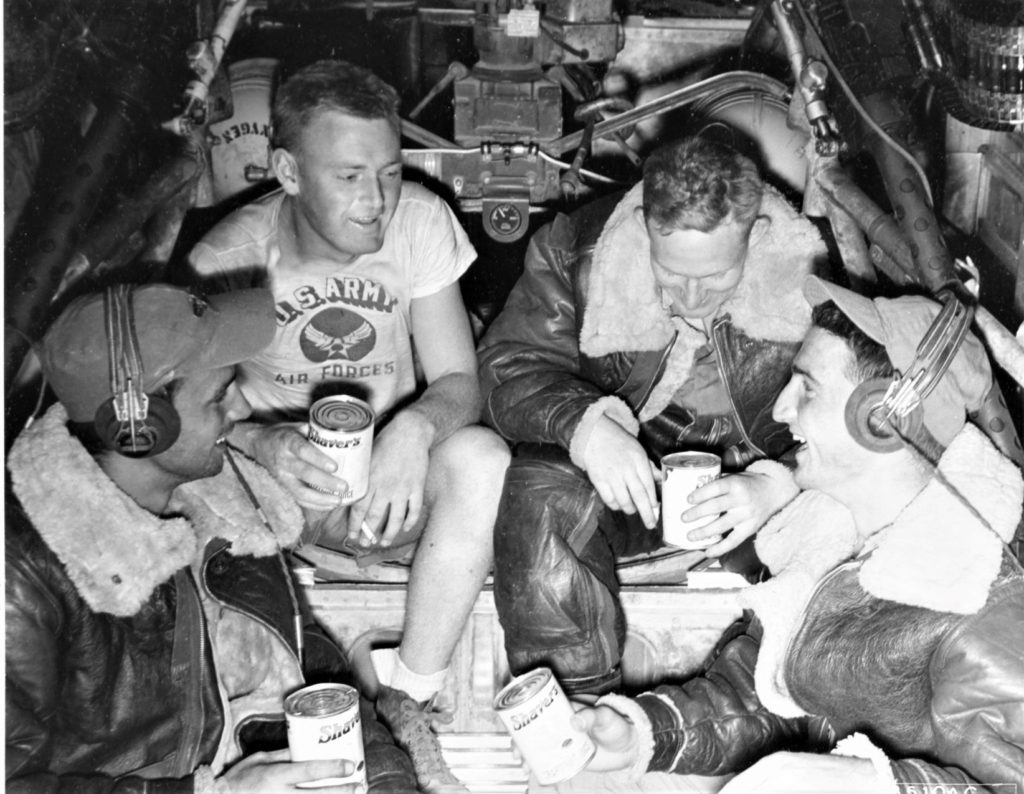
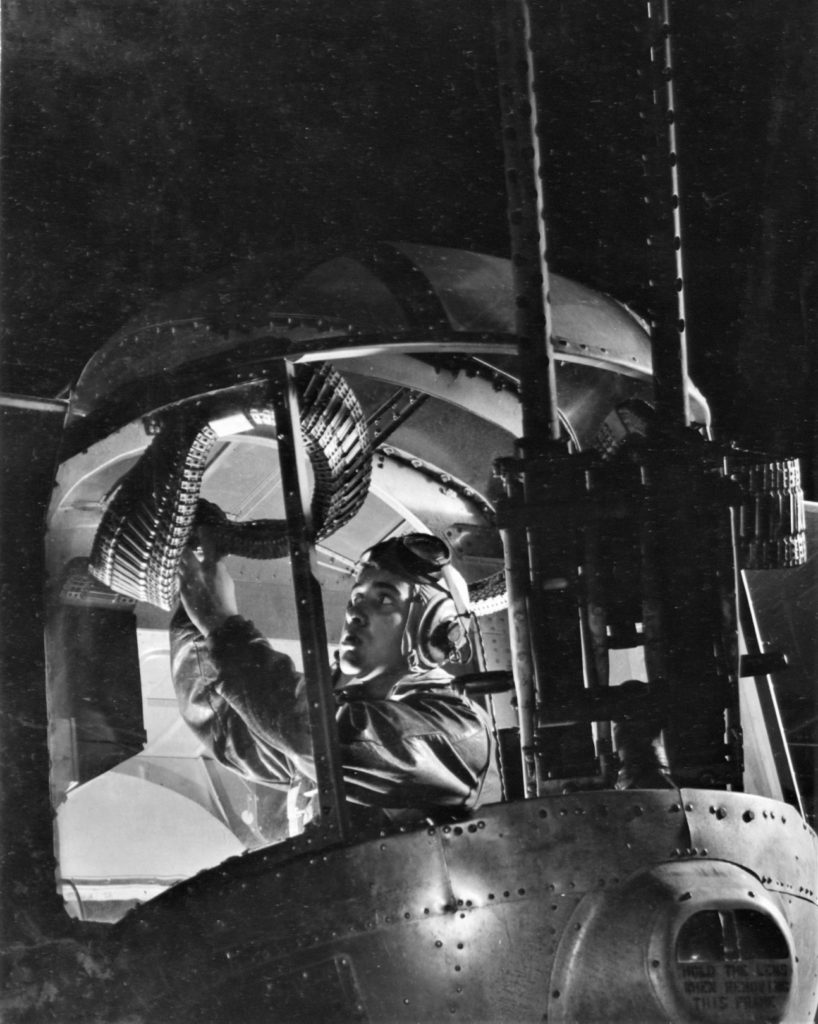
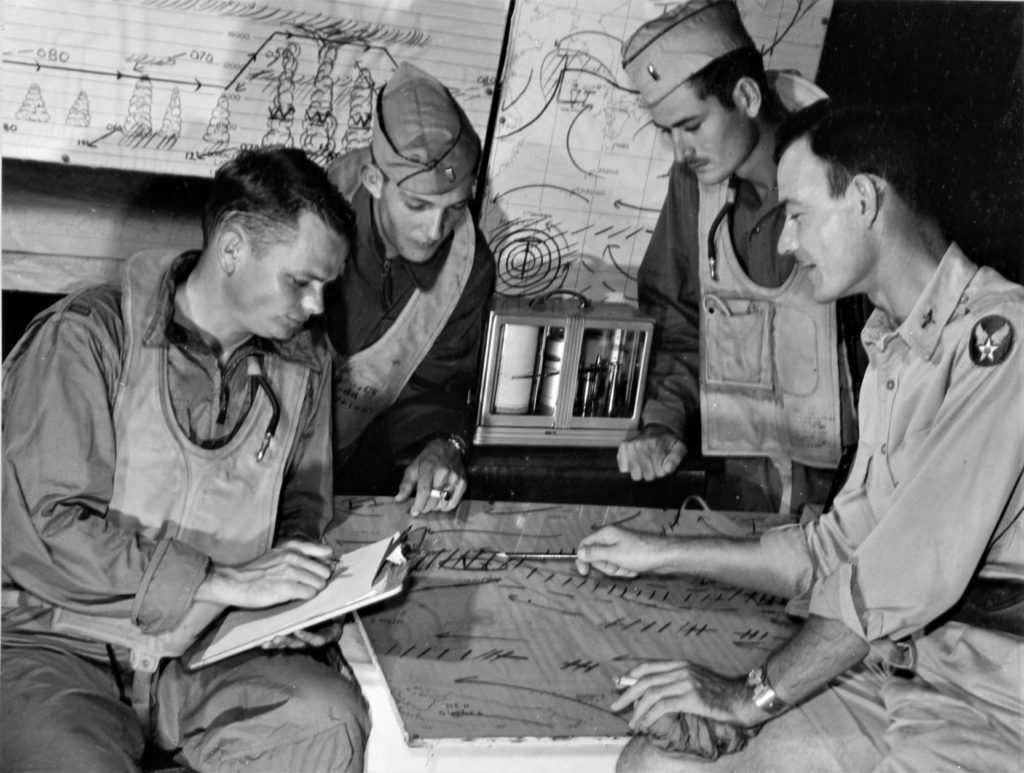
28 April 1945 – WIth the 30th Bomb Group back in Hawaii, the 494th Bomb Group sent 12 crews and nine B24s to Guam to augment the 11th Bomb Group in attacks on Marcus Island and Truk. They would not return to Anguar Island until 14 May 1945.
May 1945
Marcus is hit heavily to prevent staging of Kamikaze aircraft
By the end of April, the brass decided to to something about the threat. They did not want a repeat of the Kamikaze strike on Ulithi earlier in March or attacks on Saipan as happened before the Iwo Jima landings. The runways at Marcus Island got increased attention as it was one air base Japan had from which they could strike the US B29s in the Mariannas or stage to Truk to attack the US Navy anchorage at the Ulithi Atoll.
1 May 1945: 16 B24s strike Marcus Island.
______________________________________________________________________________
A personal account of a B24 mission to Marcus Island – (From the book Flak Pak by Kenny Kemp)
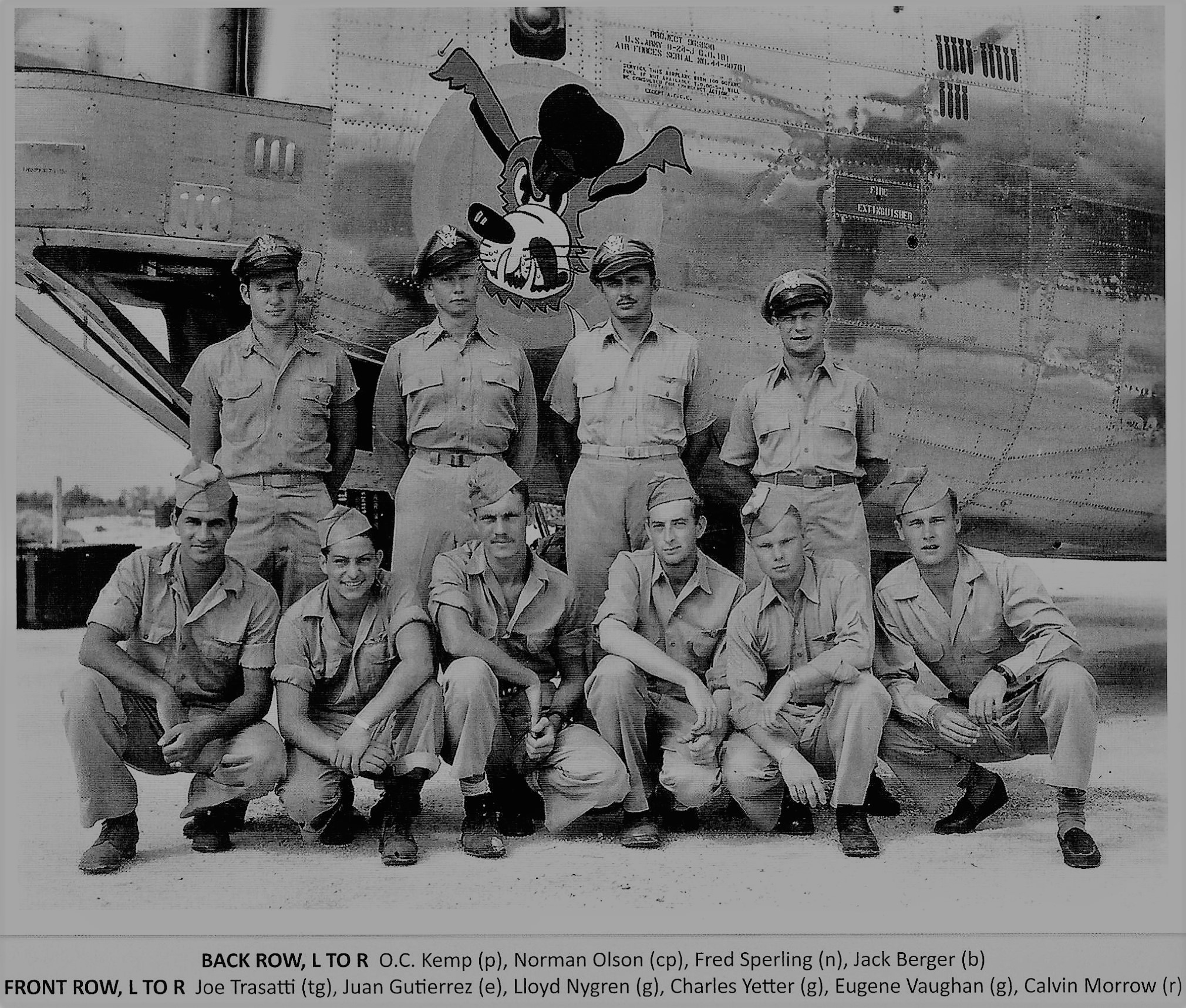
Omer C. Kemp, from southern California, joined the US Army in March 1943 and was accepted into pilot training from which he graduated in early 1944. Finishing B24 transition training at Liberal Field, Kansas in May 1944, he soon found himself assigned to the Pacific theater, arriving on Anguar Island on 5 January 1945, bringing a new B24 and his crew of nine other men with him.
He was assigned to the 865th Bomb Squadron, 494th Bombardment Group on Anguar Island. With a few bombing missions to the Philippines and Palau under his belt, he was one of the crews assigned to the Guam based 11th Bomb Group for operations agains Marcus island and Truk Atoll. They arrived on Harmon Field, Guam on 27 April 1945. On 1 May 1945, he found himself scheduled to be a part of a flight of 16 B24s scheduled to attack Marcus island. The 865th Bomb Squadron assigned six B24s to the flight while the 11th Bomb Group provided the other 10.
Takeoff was at 7:00 am from Harmon Field. Lt Kemp was flying Rover Boy ‘s Baby for the mission, and was assigned as a wingman to Lt Altman, who would lead his three aircraft element. One B-24 aircraft had problems with his # 3 engine and had to abort, leaving just two aircraft in the Lt Altman element. The other element from the 865th Bomb Squadron had three aircraft. One B24 from the 11th Bomb Squadron also aborted, leaving a total of fourteen aircraft that would attack Marcus that day. Following is his account of the mission:
” About two hours into the flight, huge storm clouds rose before us, remnants of a typhoon. The other thirteen planes went into the typhoon but Lt Altman, our element leader, decided to go around. I wasn’t happy about skirting the storm, which would cost precious time and fuel, but in the Air Force you follow the leader.
As we rounded the storm, which towered over us like immense breaking waves, we scanned the air for the rest of the mission aircraft and the ocean for Marcus. We saw neither. Dead reckoning indicated we were about fifteen minutes out. We should be seeing it by now but it was nowhere in sight.Just then Altman called, saying his navigator’s sextant had gone out and asked if Fred (Kemp’s navigator) could get a fix on where we were. Neither aircraft were equipped with the airborne radar.
While Fred searched for a patch of blue in the clouds above us for a sighting, I banked gently, starting a “square search”, a kind of widening spiral where each revolution is five miles bigger than the previous one, searching for Marcus. But there were just as many clouds below us as above. It was starting to look hopeless when the interphone cracked: Captain, said Fred, anger heating his words, “We’re twenty miles west of the target!”
I asked engineer Juan Gutierrez how we looked for fuel. “Not good,” he said. “We used up a lot going around the storm.”
“How much left?” I persisted.
“Less than a third.”
“And we are not even to the target!” someone said.
“Quiet!” I said, trying unsuccessfully to keep my voice flat and calm. “We’re almost there. Bombing stations.”
I relayed the information to our element leader, Lt Altman, and we both turned eastward toward Marcus Island. Within minutes we were both socked in again and Altman’s plane, which had been off my left wing, had disappeared in the clouds.
As we approached the target, I silently calculated our odds of getting home and when I glanced over at my copilot, Oly. I saw his face change from concern to alarm. He’d read my thoughts in my eyes. “Lose the bombs, lose two tons,” I said turning and staring straight ahead.
‘Ton and a half,” said Oly leaning the engines. (Reducing fuel flow to the engines)
I rested my hand on the bomb bay door lever, ready to salvo our bombs and go home, when Jack Berger, our bombardier, said, I see it.
“Where?” I asked. We were enveloped in clouds; I couldn’t see a thing out of my window.
“Its gone now,’ said Jack. “Socked in again.”
“Well,” I said. “Give it your best guess.”
“Guessing,’ said Jack, and suddenly our aircraft shot upward, released from our heavy bomb load.
Suddenly Altman’s plane filled my left window, so close I could see the startled expression on his co-pilot’s face. I hauled the yoke back and to the right, and we narrowly avoided a midair collision. In another second he was gone, hidden again by the coluds.
“Holy cow!” said Oly.
“Let’s get out of here,” I said, and put the plane into a steep right bank. I was about to ask Fred for a vector when he spoke first. “Bearing one eight zero, distance niner seven zero miles. Skipper let’s go home.”
“Okay boys,” I said, “Let’s lighten this bird.”
Out went the ammo, the waist guns, and the oxygen tanks. If we could have pried off the belly turret, it would have gone too. Each pound we dropped gave us another minute, but we soon ran out of things to drop out the bomb bay doors. I cautioned the men to not throw the life rafts overboard.Someone laughed but i wasn’t joking.
I raised the nose to a near stalling speed of 135 mph; cruise is around 160 mph. There were no other planes anywhere. The sun was setting in the west. Oly and I took our headsets off and started talking quietly between ourselves. Should we bail out and hope we’d be found or risk a night ditching?
I told Cal Morrow, our radio operator, to contact the Navy and give them the scoop. There must be Navy ships down there somewhere. He got a hold of them and the Navy said they’d track us and send a Dumbo if we had to ditch.
I did not want to ditch; I’d heard too many horror stories about rough seas and cartwheeling airplanes, killing everyone onboard. No, we would hazard it to Saipan, which would shave an hour from our flight. If we made it that far.
I asked Gutierrez about our fuel situation. “The sight gauges are just as inaccurate now as they were five minutes ago, sir,” he said, “They show twenty five for each engine.”
A B-24 burns 100 gallons an hour. Didn’t Fred say we were still 200 miles out?
The sun had set and Oly and I dimmed the instrument panel and peered into the darkness. With no moon, we could not tell where the sea ended and the sky began. Occasionally we’d see a light on the ocean but it would turn out to be a fishing boat or our imagination. Finally, we saw a string of lights on the horizon that had to be Saipan.
If oxygen were fuel, we wouldn’t have used an ounce those last fifteen minutes – everyone held their breath. Morrow contacted the Saipan tower, saying casually, “We’re kind of low on fuel, so don’t let anyboby jummp in line in front of us.” That drew nervous laughter from the crew.
I lined up the approach and heaved a sigh of relief as we passed over the fluorescent surf just fifty feet below us When our wheels hit the coral runway with that familiar nails-on-chalkboard screech, everyone breathed again. I taxied to the apron and braked to a stop. Oly cut the egnines. Soon we were were enveloped in darkness and silence. I shivered, a bead of sweat trickling slowly down my spine.
Then we heard sirens and in a minute we were surrounded by fire trucks and emergency vehicles, followed by a lumbering fuel truck. We got out of the plane, its aluminum skin reflecting in the trucks’ headlights. I flexed my knees, feeling the firmness of the taxiway under my feet. Yes, we were alive.
Suddenly everyone was lighting up and the fuel crew was shooing the smokers away from the plane. As we stood in the darkness watching them fuel ROVER BOY’S BABY, the same unspoken question was on everybody’s mind.
When they finaly coiled the black ribbed hose onto the rear of the fuel truck, the fuel boss walked toward me, filling out a form on his clipboard. “Didn’t know they held that much,” he said, handing me the receipt and giving me a you-are-one-lucky-son-of-a-gun look.
“Three thousand two hundred nineteen gallons,” said Oly, reading over my shoulder. “Oh my lord.”
“Just twenty five left,” whistled Gutierrez.
I smiled. “That’s fifteen minutes’ worth. You call that close?”
Nine guys glared at me.
From the book Flying with the Flak Pak; Kenny Kemp (his son); Alta Films Press, Midvale, UT

_______________________________________________________________________________
9 May 1945 – The US Navy sends eight PB4Y-1 Liberators and PB4Y-2 Privateers to attack Marcus Island at dawn, destroying at least two Japanese aircraft about ready to take off. Two Navy planes are shot down during the attack.


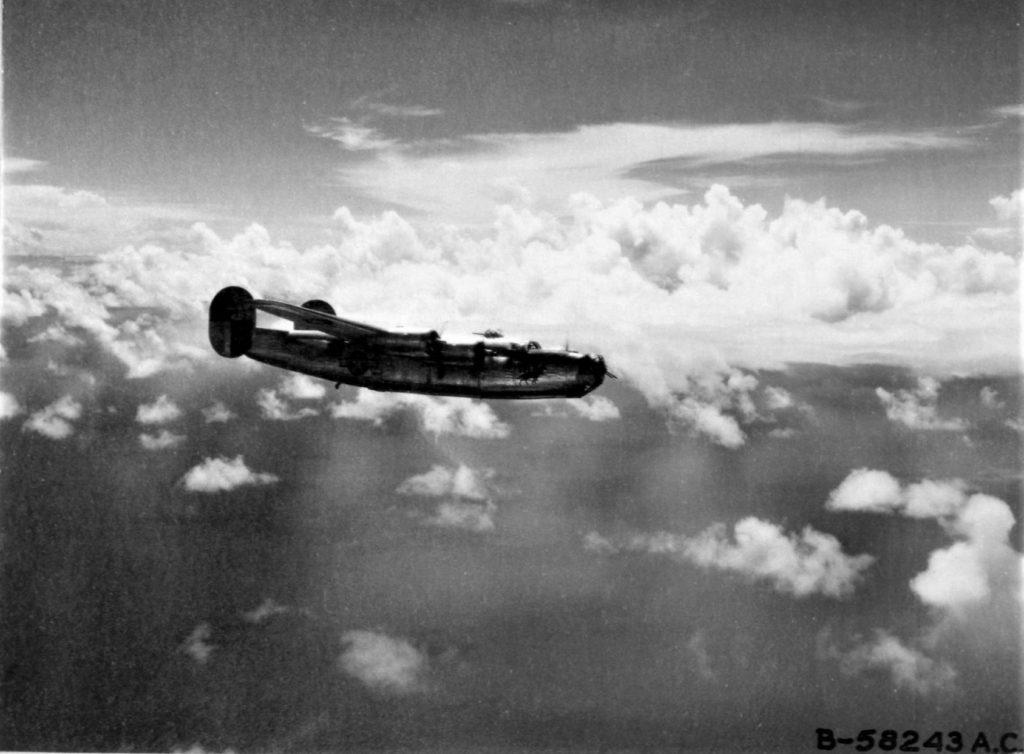
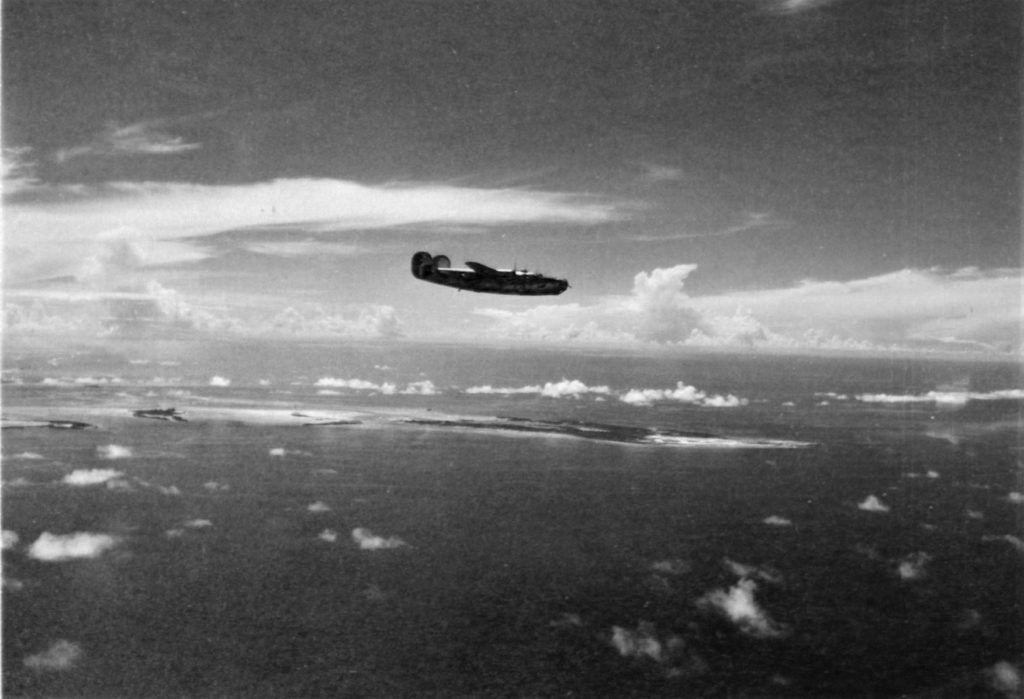
14 May 1945 – The last of the 494th Bomb Group aircrews and aircraft return to Anguar Island from Guam.
20 May 1945 – Four B-24Js of the 26th BS, 11BG out of Harmon Field Guam attack the Air Operations building on Marcus Island. Just west of the South Boat Basin, the target was completely covered by clouds necessitating a radar run with the results of the bombing undetermined.
26 May 1945 – Ten B-24J attacked air installations on Marcus Island, dropping sixty100 pound Fragmentation bombs on the installations just north of the south runway. 120 100 pound General purpose bombs were observed to hit the areas around and part of the runway. Three planes received minor damage from flak fragments, but all landed safely at Harmon Field, Guam.
10 May 1945 – Ten Guam based B24s hit Marcus Airfield.
31 May 1945: The 864th Bomb Squadron of the 494th Bomb Group had the following number of aircraft on the last day of May.
B-24J – 10
B-24L – 2
B-24M – 5 (radar equipped)
June 1945
4 Jun 1945 – Thirteen Guam based B24s hit Marcus Airfield and the southern Boat Basin on the island.
12 Jun1945 – Twelve Guam based B-24s hit Marcus Airfield
19 Jun 1945 – Twenty two B24s bomb Marcus Airfield
24 Jun 1945 – One B24 from Guam bombs buildings on Marcus Island.
25 Jun 1945 – Three B24sw attack at dawn the heavy anti aircraft positions on the west coast of Marcus Island.
26 Jun 1945 – One B24 attacks at dawn the heavy anti aircraft positions on the west side of Marcus Island.
27 Jun 1945 – Three B24s bomb the underground storage area and fortifications on Marcus Island.
28 Jun 1945 – Three B24s from Guam bomb the fuel storage facility on Marcus Island.
30 Jun 1945 – Two Guam based B-24s bomb the boat basin on the south side of Marcus Island. Also, for the first time, B29s from the 20th Air Force fly a mission against Marcus Island.
July 1945
The B24s of the 494th and 11th Bombardment Groups move to Okinawa and the 30th Bomb Group returns to Hawaii
By mid summer 1945, Marcus Island, cut off from resupply except for a few submarines, was left to wither on the vine, with occasional reconnaissance flights by the US Navy from Guam and a few bombing flights from the remaining B24s and training flights for new arrived B29 aircrews.

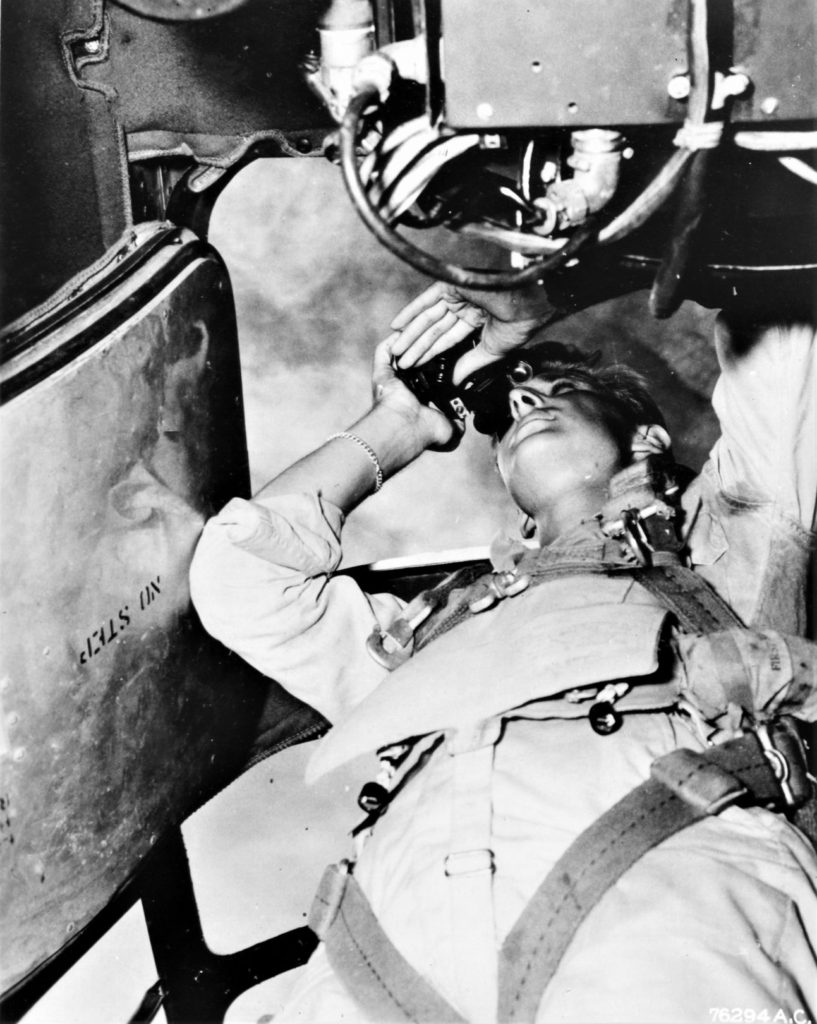
1 Jul 1945 – Two B24s from Guam bombed the building concentration on Marcus Island.
2 Jul 1945 – Three B24s attack the radar installation on Marcus Island.
3 July 1945 – Two B24s attack the water storage facility on Marcus Island.
4 Jul 1945 – In the last attack by Army Air Force B24s of 7th Air Force, three B24s from Guam attack the anti-aircraft installations on the southwest corner of Marcus Island. In their place, the B29s began to bomb Marcus Island as part of a training mission for their new aircrew members.
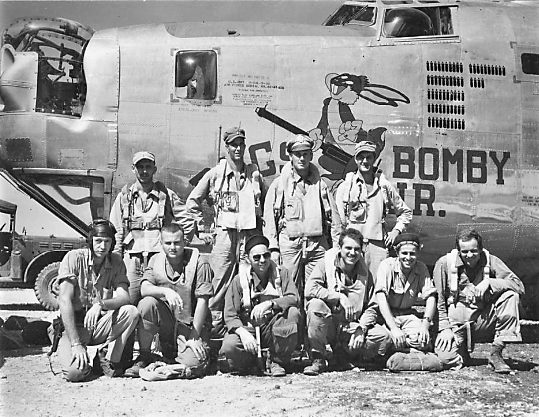
The B29s take over from the B24s the task of monitoring Marcus Island
Using Marcus as a target for shakedown missions, XXI Bomber Command dispatched eighty-five B-29’s against it during the last month of the war.
21st Bomber Command – Headquartered at Harmon Field, Guam
Each B29 wing had four groups, and each group had three to four squadrons. Each squadron was normally equipped with 15 B29s.
NORTH FIELD, GUAM (Now Andersen AFB)
314 Bomb Wing (Due to a shortage of aircraft, the fourth squadron of each group was deactivated)
19 Bomb Group (Solid Black Square – White M) (28th, 30th, & 93rd Bomb Squadrons)
29 Bomb Group (Solid Black Square – White O) (6th, 43rd, & 52nd Bomb Squadrons)
39 Bomb Group (Solid Black Square – White P) (60th, 61st, & 62nd Bomb Squadrons)
330 Bomb Group (Solid Black Square – White K) (457th, 458th, & 459th Bomb Squadrons) 60 B29s
NORTHWEST FIELD, GUAM
315 Bomb Wing
16th Bomb Group (Diamond B) ( 15th, 16th, 17th & 21st Bomb Squadrons)
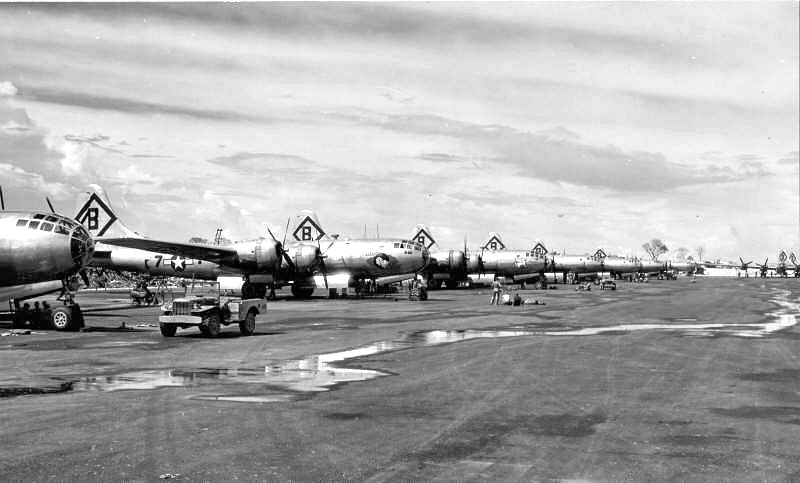
501st Bomb Group (Diamond Y)
331st Bomb Group (Diamond L) ( 355, 356, 357& 461 Bomb Squadrons) 461 deactivated 1944)
502nd Bomb Group (Diamond H) (402, 411, & 430 Bomb Squadrons)
NORTH FIELD, TINIAN
313 Bomb Wing ( B29 aircraft varied, 37 to 48 assigned B29s per squadrons)
6 Bomb Group (24, 39, & 40th Bomb Squadrons)
9th Bomb Group (1st, 5th & 99th Bomb Squadrons)
504th Bomb Group (398th, 421st, & 680th Bomb Squadrons)
505th Bomb Group (482nd, 483rd, & 484th Bomb Squadrons)
509th Bomb Group (Atomic Bomb carriers) reported directly to 20th AF commander
ISLEY FIELD, SAIPAN
73 Bomb Wing (Due to shortage of aircraft, the fourth squadron of each group was deactivated)
497th Bomb Group (869, 870, & 871 Bomb Squadrons)
498th Bomb Group (873, 874, & 875 Bomb Squadrons)
499th Bomb Group (877, 878, & 879 Bomb Squadrons)
500th Bomb Group (881, 882, & 883 Bomb Squadrons)
WEST FIELD, TINIAN
58 Bomb Wing
40th Bomb Group (25th, 44th, 45th, & 395th Bomb Squadrons)
444th Bomb Group (676, 677, 678 & 679 Bomb Squadrons)
462nd Bomb Group (768th, 769th, 770th, & 771 Bomb Squadrons)
468th Bomb Group (512, 791, 792, 793, 794, 795 Bomb Squadrons)

5 July 1945 – Three B29s from the 6th Bomb Group, 313th Bomb Wing flying out of North Field, Tinian, bombed Marcus Island on a training mission.
18 July 1945 – B29s of the 500th Bomb Group, 73rd Bomb Wing, flying out of Isley Field, Saipan, flew a “shakedown” mission to bomb the Marcus Island runways to train new B29 crews. Visual bombing from 10,000 feet was accomplished , each plane of the 11 A/C Squadron dropping 10 ton[s] of 500 lb G.P.s.
The “shake down mission” was a practice mission for the benefit of newly arrived crews. A complete list of
participating planes and crews is not available, and few details are known. Four of the planes were from the
881st Squadron. One of those was Z-8, “Duke of Albuquerque”, with Capt Ferd Curtis on board. Another was Z14, flown by Maj Horace “Hod” Hatch, now 881st Squadron CO. The 883rd supplied several crews, including the
Hinderks crew, but it is not known which plane they flew. The 883rd Squadron War Diary reported only that
all aircraft returned safely but “one or two planes suffered minor battle damage.”
(Source: http://www.500thbombgroupb29.org/journal%20-%20victory.pdf)
23 Jul 45 – From the 500th Bomb Group (B29) Operations Journal:
“23 July. 11 A/C of this Group were dispatched from this Group on a training mission against Marcus Island. A maximum load of 500 lb. G.P.’s [General Purpose High Explosive] were dropped visually with excellent results, only 3 bombs missing the target. Major English [Group Gunnery Officer] and Capt Merrehew [Group Weather Officer Donald Merrihew] participated. Capt Landaker, 883rd Bombardier, assumes duty as Group Bombardier.”
A list of the planes and crews which went on the training mission is not available. All that can be determined is that four came from the 881st Squadron, four from the 882nd and three from the 883rd. One of the four from the 881st was Z-4, “Black Magic”, with Capt Ferd Curtis on board.
28 July 1945 – Four B29s from the 6th Bomb Group, 313th Bomb Wing on North Field, Tinian, flew a training bombing mission to Marcus Island.
August 1945 – The war ends for Marcus Island